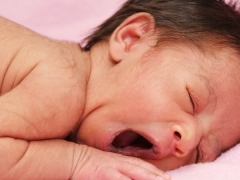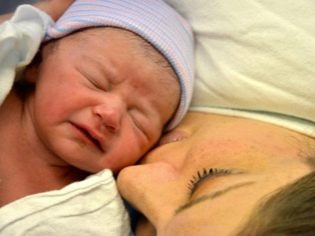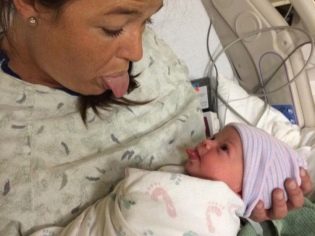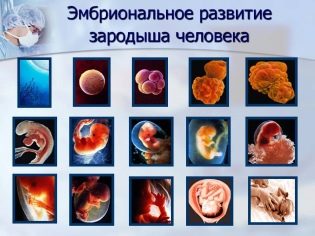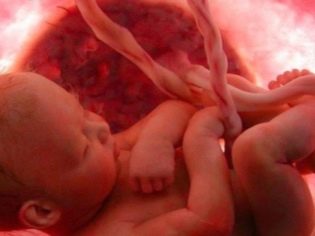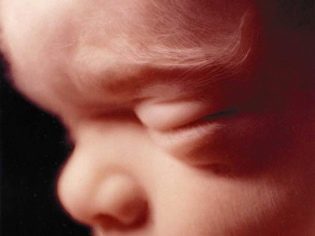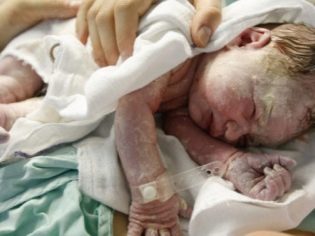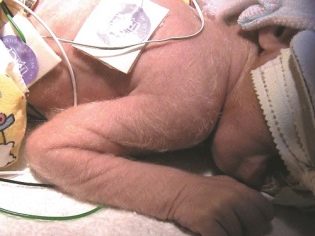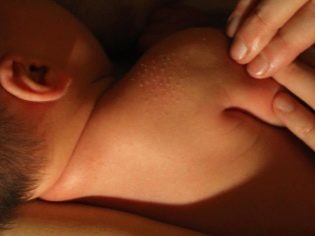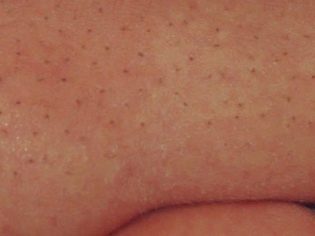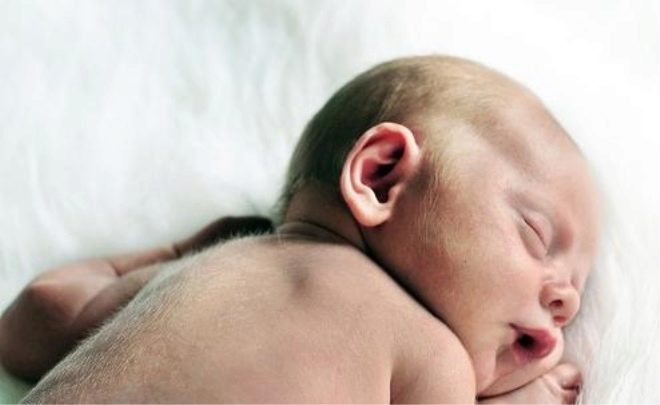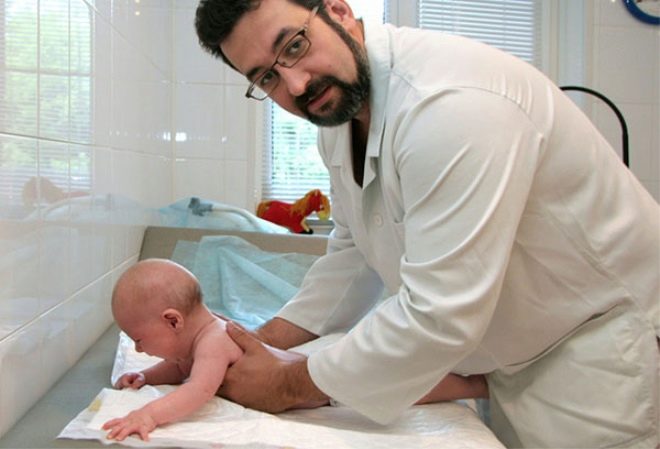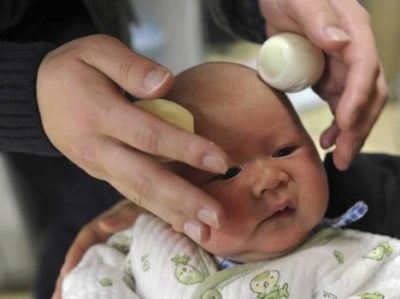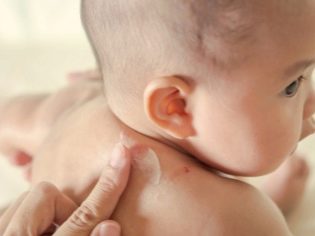Lanugo in newborns
The first meeting with the newborn is a big event for the mother. Finally, she can look at her child, hug him. But the joy of the first meeting may be overshadowed by the unusual appearance of the baby.
About 3% of children are born hairy, and this is not about the hairs on the head, but about hair growth in other parts of the body, including the face of the newborn. Why this happens and what new parents do, we will tell in this article.
What it is?
The fetal life of a child proceeds according to the laws of evolution. During the months spent in the womb, the baby goes through all its stages at an accelerated pace, each takes not several millennia, but only a few weeks.
At the embryonic stage, the crumbs have gills and a tail, and a little later hair appears all over the body.
These first hairs appear at the very end of the first trimester of pregnancy, when hair follicles form - at about week 12. Very thin and completely devoid of pigmentation (colorless) hair is the first product of the hair follicles. They are called lanugo.
The child reaches full body hair by about 28 weeks of gestation, but by 38-40 weeks the hairs covering the body usually fall out. This is due to the development of the child.
Lanugo needs him to protect thin, like parchment, skin from constant exposure to liquid (the baby swims in the amniotic fluid). A thin layer of skin is covered with a thick layer of original lubricant. Only thanks to lanugo it is not washed off and not erased from the skin. Hair holds it exactly as long as it is necessary.
This necessity decreases as the fruit ripens - the skin becomes multi-layered, in the third trimester the layer of fatty subcutaneous tissue rapidly increases, the baby becomes not as vulnerable as it used to be.
Lanugo fall out, grease disappears. For childbirth, it is preserved only in those places where natural mechanical friction occurs (in the folds in the groin, in the armpits, in the neck fold).
Where lanugo disappears is easy to understand. Together with epithelial cells and a natural suspension of water, the hair that fell out of the body gets into the baby's digestive tract when it swallows water.
Then the epithelial cells, lanugo and bile form in the intestines of the child the original feces - a dark green, almost black, mass, which the baby will cod during the first two days after birth.
Most babies are born with smooth skin without a lanugo. But there are exceptions. Let's say right away, nothing terrible about it, just need to properly care for the child.
Why is observed after birth?
Even an exact knowledge of the mechanism for the formation of a lanugo cannot exclude many questions. First of all, the newly-made mother of the baby, who was born with hairs on the body, wonders why this has become possible, because all medical sources claim that lanugo usually passes before birth.
The most obvious reason is prematurity. A child who was born before the expected date of birth will not necessarily be considered premature from the point of view of obstetricians, but the signs of "undermaturity" may well be observed. The remains of lanugo on the body are just such signs.
The earlier the birth occurred, the more abundant lanugo is observed in infants.
If the child was born on time, but the remains of lanugo are still observed, this is considered a variant of the physiological norm, usually it goes within 1-2 weeks of life.
The people lanugo newborn often called "bristle" or "poker". Long since around this seemingly innocuous and completely physiological phenomenon, mystical conjectures have taken shape. Thus, in the Middle Ages, a woman could be sent to the fire on suspicion of practicing witchcraft and magic, if she had a child with lanugo.
And in Russia, until the end of the 18th century, it was believed that the hairy child was the fruit of lust and sin, and therefore the husband had the right to give his wife an interrogation with addiction, to flog her, and the child should be baptized as quickly as possible so that evil forces would not control his soul.
Today it is completely obvious that the down on the body has nothing to do with magic or sin.
The reasons for which the first hair is preserved and does not fall out in the womb are not fully understood, but doctors and scientists are inclined to consider this an atavism, that is, a sign inherent in distant ancestors, besides a temporary atavism.
Is it dangerous?
By themselves, thin and colorless lanugo hair does not give the child any inconvenience or unpleasant sensations. In this, they should be set apart from dark and rather prickly, denser bristle hairs that look like dark spots on the back, on the pubic part, on the sides and on the shoulders.
A coarser and stiff bristle with pigmentation is also an atavism, and, fortunately, temporary. But it can easily cause inconvenience: the child will be anxious, touching the skin with a bristle to clothes, bed, diapers. Often the “brush” causes the baby to cry constantly.
The main danger lies in this temporary inconvenience, and the coarse brush is more dangerous for the parents, who will suffer from the child's constant cry, to look for the cause of his mouth, and at the same time the symptoms of various diseases.
For the very baby lanugo after birth does not pose any danger. Hair growth will take place during the first weeks of life.
If in two or three weeks lanugo does not go away and new areas appear with abnormal hair growth, you should definitely show the child to the endocrinologist and pediatrician. It is possible that the hair on the body is not lanugo at all, but a manifestation of a rare genetic disease of hypertrichosis, which is also called werewolf syndrome.
Some hormonal disorders in the child’s body can also manifest as excessive hairiness. Proper and timely treatment at the endocrinologist will help eliminate the anomaly.
What to do?
The answer to this question is simple - nothing. Even if you don’t do anything, the lanugo and the “brush” will fall out and be replaced by ordinary cannon hairs that grow on the skin of absolutely every member of the human race.
It will happen in a couple of weeks. But doing nothing is not a parental rule, and therefore another question often arises - how to remove a lanugo without waiting for two or three weeks.
First of all, you need to carefully treat the skin of the baby, bathe it only with a soft and soft sponge. Tips often lather lanugo, antiscientific and harmful: frequent use of soap dries the skin of the child, creates the prerequisites for the development of microcracks, infection, contact allergies.
Any pediatrician to whom you turn with the question of how to remove lanugo on the forehead or back, knows the old way, which has nothing to do with medicine, but is popular from generation to generation.
All you need is a crumb from freshly baked bread. After bathing with a ball from such a crumb, “roll out” places of plentiful hairiness or bristles.
Similarly, a ball of cooked warm dough is used, for which you need only a little flour, warm water, and a spoon of sunflower oil. Tight dough gently massages the skin, and the hairs remain on the ball.
Popularly popular is rolling out a boiled egg.A warm boiled egg is applied to a baby's buttered or creamy skin and rolled clockwise with a palm for 3-5 minutes. The main thing is that the egg was not hot, otherwise you can burn the crumbs.
There is also a mention of imposing a honey mask on a clean skin after a bath, but this method seems rather doubtful, since honey for a child under 3 years of age is prohibited in any form. This is a strong allergen that, even when applied externally, can greatly harm a newborn.
What can not be done?
Pediatricians, telling new parents about lanugo, are often told not about what to do, but about what should not be done categorically, to protect the child from excessive activity of mom and dad. All bans are not taken from nowhere, they were formed on the basis of pediatric practice, because the doctors have to eliminate the consequences of parental experiments.
So, when lanugo a child can not try to shave or cut fine hair. This is traumatic, because the skin of the child is much thinner and more vulnerable than adult skin. In addition, the hair that shave off, begin to grow more actively, all dads know about it.
You should not apply the resin, trying to grind and remove hair radically. Also prohibited funds for peeling and hair removal. All of them are almost 100% likely to cause a severe allergic reaction, chemical burns, and microraniums that remain after peeling attempts can easily become infected with pathogenic bacteria, because immunity in newborns is still very weak.
Attempts to pull out hairs with tweezers or small tweezers (and it happens) is akin to mocking a child - it hurts, it is bad, and the risk of infection of hair follicles and sebaceous glands is higher than ever.
Sometimes a puzzled mom of a hairy baby can listen to the advice of neighbors in the stairwell or her friends and try to “boil out” a lanugo and a “brush”.
Evil tongues advise for this steamed baby to wrap with cling film and cover with a warm towel. Such measures can lead to the death of a child, because the ability to give off heat to children is different, and hyperthermia can begin suddenly and develop rapidly.
In some cases, lanugo can persist in a child for several months, but this happens quite rarely. In this case, after consultation with the doctor, you can use drugs that will remove unpleasant skin sensations, for example, Fenistil-gel. It is impossible to use any medication to rid the newborn from lanugo without the consent of the doctor.
And most importantly, lanugo is not a contraindication for a general strengthening massage, and therefore the child can and should carry out such useful procedures, you should not refuse.
You can learn more about the method of detecting the bristle and getting rid of it from the following video.
